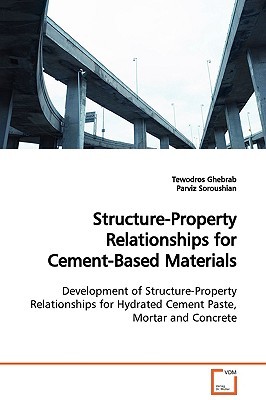
- We will send in 10–14 business days.
- Author: Tewodros Ghebrab
- Publisher: VDM Verlag
- ISBN-10: 3639119304
- ISBN-13: 9783639119305
- Format: 15.2 x 22.9 x 1 cm, softcover
- Language: English
- SAVE -10% with code: EXTRA
Structure-Property Relationships for Cement-Based Materials (e-book) (used book) | bookbook.eu
Reviews
Description
A mechanistic approach was adopted to develop models for the mechanical properties of hydrated cement paste (hcp), mortar and concrete. These models reflect the fundamental structure of concrete, and represent a departure from the predominantly empirical models available for cement-based materials. The intrinsic elastic modulus and fracture toughness of hcp were determined based on the interatomic interactions between calcium silicate hydrate particles, which are the primary binder among the hydration products of cement. The elastic modulus model of hcp was developed by introducing the effect of elliptical capillary pores into the corresponding intrinsic model. The fracture toughness model of hcp was also developed by introducing the energy dissipation associated with the C-S-H/C-S-H debonding and the phononic frictional pullout of calcium hydroxide (CH) crystals, with the latter phenomenon found to be the major contributor. The strength of hcp was determined using the elastic fracture mechanics principles. Experimental results and available empirical models were used to evaluate the models.
EXTRA 10 % discount with code: EXTRA
The promotion ends in 17d.21:49:04
The discount code is valid when purchasing from 10 €. Discounts do not stack.
- Author: Tewodros Ghebrab
- Publisher: VDM Verlag
- ISBN-10: 3639119304
- ISBN-13: 9783639119305
- Format: 15.2 x 22.9 x 1 cm, softcover
- Language: English English
A mechanistic approach was adopted to develop models for the mechanical properties of hydrated cement paste (hcp), mortar and concrete. These models reflect the fundamental structure of concrete, and represent a departure from the predominantly empirical models available for cement-based materials. The intrinsic elastic modulus and fracture toughness of hcp were determined based on the interatomic interactions between calcium silicate hydrate particles, which are the primary binder among the hydration products of cement. The elastic modulus model of hcp was developed by introducing the effect of elliptical capillary pores into the corresponding intrinsic model. The fracture toughness model of hcp was also developed by introducing the energy dissipation associated with the C-S-H/C-S-H debonding and the phononic frictional pullout of calcium hydroxide (CH) crystals, with the latter phenomenon found to be the major contributor. The strength of hcp was determined using the elastic fracture mechanics principles. Experimental results and available empirical models were used to evaluate the models.


Reviews